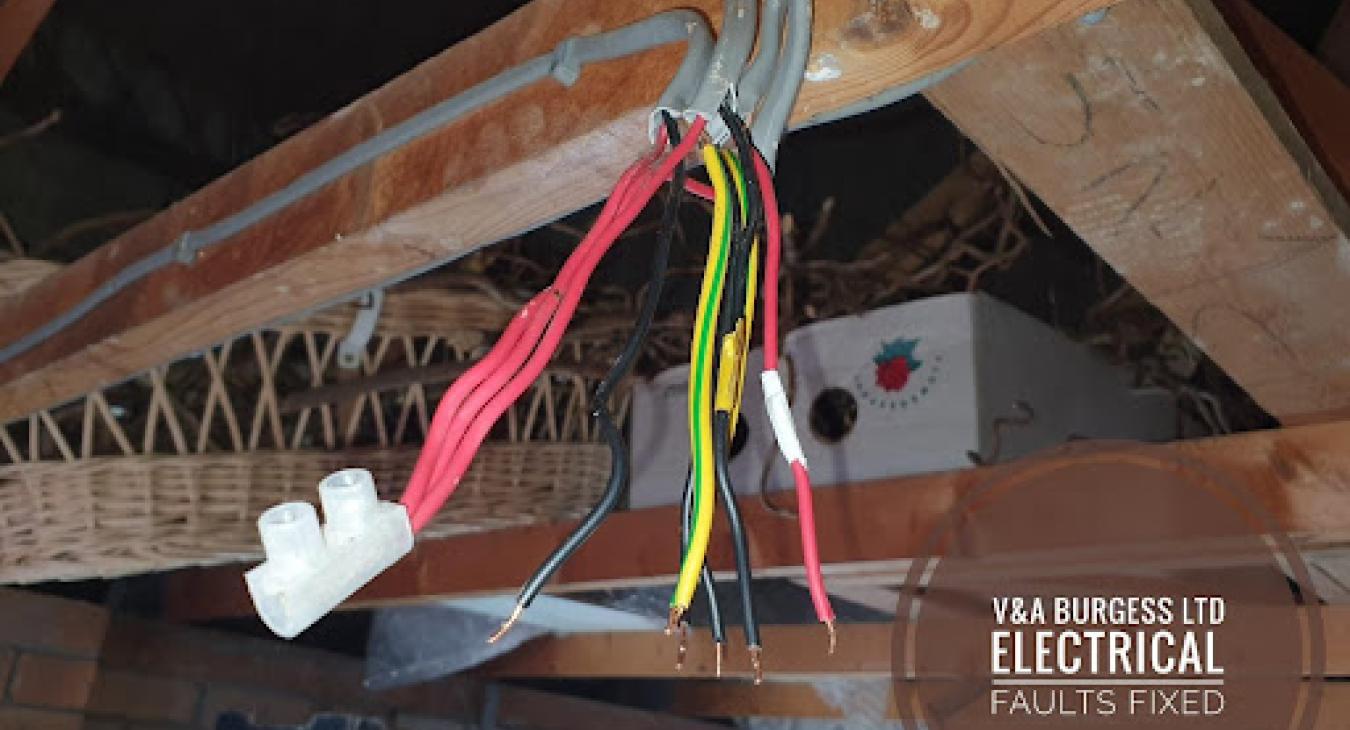
1) Everybody that owns a garage will know that there are two types of garage owner.
There is the meticulous, organised bordering on obsessive garage owner that keeps everything in it place, has a super neat garage, racked out and stacked neatly then there is the other type of garage owner. The other type of garage owner is the person that likes not to think about the garage, piles everything in there with the intention of sorting it out “one day” and dreads having to go into the garage for anything at all. Regardless of which type you are, everyone needs a good bright light in the garage and GARAGE LIGHT WIRING is needed in order to make this work. Electrical wiring is often seen as a potential DIY task and there are even people who will attempt this. The danger with undertaking your own wiring is that it cannot be correctly tested as required under BS7671.
Back to top2) What is required in order to make a garage light work?🤔
First of all, there needs to be a suitably safe and compliant electrical supply to the garage. This electrical supply circuit needs to be correctly protected at the main consumer unit / fuse box of the property and the cable needs to be adequate for its intended use as well as installed safely. Your electrician will be able to make sure that the garage electrical supply is up to standard and fulfills all the necessary requirements for safety. Once the supply is inside the garage then we need to get power to the light fitting itself, somehow.
Back to top3) Garage consumer unit or?
Some electricians will choose to have a separate garage consumer unit for the wiring inside the garage and this is often a very sensible idea. A separate garage consumer unit is convenient and means that in the event of an electrical fault that there will be no disruption to the main property normally. The garage consumer unit will normally have two different circuits. One for any lighting in the garage and another for any electrical sockets that are required in there. The circuit breakers inside the consumer unit have different ratings on them for supplying different levels of current to equipment. Electrical sockets require much more electrical current than that of a lighting circuit so the circuit breaker and the cable will be bigger. In the case of the circuit breaker, the physical dimensions of the circuit breaker will remain the same but the device itself will allow more electrical current to flow through the circuit before it trips. It is normal for a lighting circuit in a garage to have a 6-amp circuit breaker and a socket circuit to have a 16 amp or possibly a 20 amp if there are more sockets or the garage is particularly large.
Back to top4) I don’t have a garage consumer unit🤷
Sometimes, electricians do not install a separate consumer unit in the garage and instead, take a feed from an existing electrical circuit. When this happens, the electrician should make some calculations as to the expected electrical load required in the garage, the existing electrical load on the existing circuit and determine whether a new circuit is preferable or necessary. When there is no existing consumer unit in the garage there may simply be a “fused spur”. This is often a switch, with or without a little red neon, and with a replaceable fuse built in. This is often the cheaper way of achieving GARAGE LIGHT WIRING and as long as the load isn’t too great in the garage, is often fine to do this.
Back to top5) How does power get to the light?
A power feed needs to be taken to the light switch or the light depending upon which wiring method is being used and then a suitable switching arrangement installed. It is no good simply running a permanently live cable to the light fitting as the light will always be on! 😊 There needs to be a switch wire that picks up the live feed and takes it to a switch, when the switch is operated a ‘switched live’ is created which feeds the power to the light fitting. Your electrician will figure out the best method for wiring your garage light for you and make sure that all work is carried out safely and in accordance with BS7671 Electrical requirements.
Back to top6) How much does garage light wiring cost?💷
£40 - Only kidding. Who knows? It depends entirely upon how much work there is to do. Let’s say that the garage has no electricity supply to it at the moment and is situated at the bottom of your garden, your fuse box and electrical system is old and hasn’t been updated and the cable HAS to be buried out of sight for aesthetic reasons. This type of installation is likely to cost one heck of a lot more than a property where an electrician has to run a short length of thin cable to a light from an existing switch. Typically to supply and install a replacement light fitting in a garage the cost will be around £150 to £180. To install a whole new supply in the scenario mentioned above is likely to cost up to a few thousand pounds. The absolute best way to get a quote for your job is to contact your local electrician and send as much information to them as possible so they can provide a rough estimate. If after you have the estimate, you are relatively happy then they may visit to give you a quote.
If you need GARAGE LIGHT WIRING anywhere between Liverpool and Wigan then give us a call and we will be happy to help you.
📞 01925 595 980 (Warrington)
📞 0151 351 4011 (Liverpool)
📧 Enquire online
💻 Visit our website
Back to top









